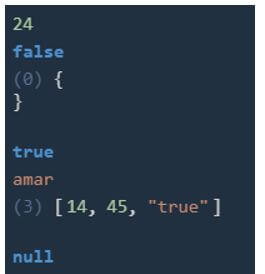

You want to convert JSON to the appropriate native Python objects (in this case a dict mapping one string to another) Or some non-JSON string into a JSON string, or something different abarnert at 1:34 1 type (data.read ()) shouldn't work if data is a string.

If the reviver function returns undefined (or returns no value - for example, if execution falls off the end of the function), the property is deleted from the object. The reviver is called with the object containing the property being processed as this, and two arguments: key and value, representing the property name as a string (even for arrays) and the property value. Specifically, the computed value and all its properties (in a depth-first fashion, beginning with the most nested properties and proceeding to the original value itself) are individually run through the reviver. It’s simple solution to a not so often required problem, but I’ve run into this enough times when I forgot exactly which JSON.NET object is required to handle this, so I wrote it down for next time for me to remember and maybe this might be useful to some of you as well.If a reviver is specified, the value computed by parsing is transformed before being returned. ToString() methods that return JSON (as many online SDKs do!), it’s nice to have an easy way to format the result into something more readable that you can dump into the Debug console. Likewise if you’re dealing with objects that have. For example in West Wind Web Surge I display sent and captured HTTP content and if the result is JSON the default Raw Response output looks like this:īy applying formatting it sure is a lot easier to see what the JSON actually looks like: In practice, it’s nice if you have any interfaces that need to display JSON in the UI.
Convert string to json code#
You then use the above code to convert into something much more readable.

But assume for a second that you are getting data already in string format from somewhere such as an HTTP stream or a file on disk. The code above of course is contrived as SerializeObject() also supports the Formatting.Indented option. String jsonFormatted = JValue.Parse(json).ToString(Formatting.Indented) String json = JsonConvert.SerializeObject(test) Ĭonsole.WriteLine(json) // single line JSON string It may be that you have an application that captures HTTP responses and you need to actually decipher the JSON that was sent to you, or you’re creating a quick and dirty admin form where you just want to dump some settings information into a screen.Īs is usually the case, JSON.NET makes JSON manipulations super easy – in fact it’s a single line of code: string jsonFormatted = JValue.Parse(json).ToString(Formatting.Indented) NET object property names to the JSON property names and copies the values for you.

NET objects into their JSON equivalent and back again by mapping the. Here’s a quick and dirty tip if you’re dealing with JSON strings that you at times need to display for debugging or simply seeing a quick view of data represented. The quickest method of converting between JSON text and a.


 0 kommentar(er)
0 kommentar(er)
